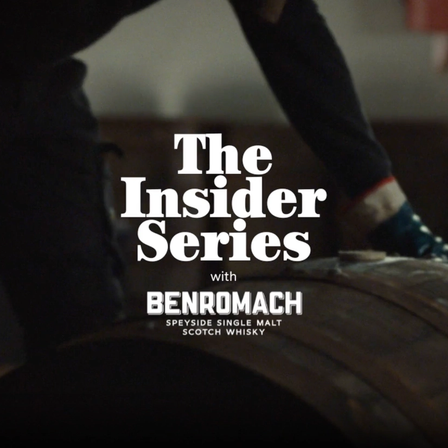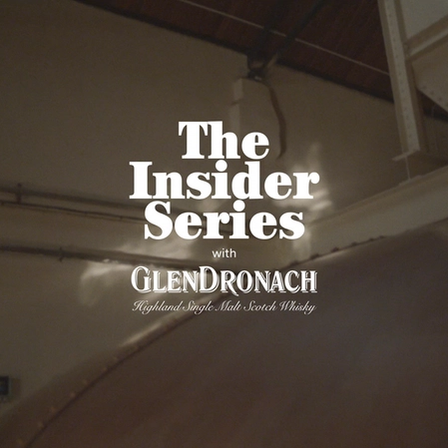- Insights
An Introduction to the Japanese Whisky Market
- Words By Emma Gibbs

Japan may traditionally be known for its sake and shochu, but in the world of fine spirits, it’s Japanese whisky that has stood out over the last two decades.
Its story weaves intricately with the history and tradition of Scotch whisky, yet Japanese whisky walks its own path in terms of artistry and innovation. It has firmly captivated whisky drinkers from all over the world and carved out a sizeable niche in the global whisky market.
This article will explore the history, popularity, accolades, and challenges that shape the fascinating world of Japanese whisky as it begins to celebrate 100 years of commercial distillation.
Origins of Japanese Whisky
The roots of early Japanese whisky can be traced back to the 1870s.
However, in 1918 Masataka Taketsuru, a young chemist, journeyed to Scotland and served an apprenticeship at the Hazelburn Distillery in Campbeltown, learning the art of distillation and maturation, before taking his knowledge and passion back to Japan.
He aided his friend, Shinjiro Torii (founder of whisky brand, Suntory), in developing the first commercial Japanese whisky distillery, Yamazaki, in 1923.
Taketsuru eventually parted ways with Torii and went on to establish Nikka, another iconic whisky brand, which is still the main rival to Suntory today. His relentless pursuit of perfection laid the foundation for what would one day become a thriving industry.
The Japanese adopted the Scottish methods of whisky production, but over time, they infused their own cultural nuances and precision into the process.
Rise & Fall
For decades, Japanese whisky remained mostly a domestic product, appreciated mainly within Japanese borders. During the 1960s and 1970s, its popularity increased, and whisky went from being a spirit reserved for well-heeled businessmen to a drink enjoyed by the average working man.
However, in the 1980s things took a turn.
Domestic consumption began to fall due in part to revised tax laws that made Scotch whisky cheaper to buy than it had been before; in 1984 alone, domestic whisky consumption dropped by 15.6%.
Many distilleries closed their doors during this period, never to re-open.
Global Recognition
However, in the early 2000s a host of factors introduced Japanese whisky to the international stage.
In 2001 Whisky Magazine held its first ever blind tasting competition, sampling 293 whiskies from Scotland, Ireland, the USA, and Japan. It was won by Yoichi 10 Single Cask from Nikka. That same year Karuizawa 12 from Mercian won gold at the International Wine & Spirits competition in London.
Then in 2003, Hibiki 17 made an appearance in Sofia Coppola’s Lost in Translation starring Bill Murray and Scarlett Johansen, which spurred the catchphrase ‘Suntory Time!’ and led to surging global demand.
Now Japanese whisky had started to turn heads, capturing the attention of whisky enthusiasts beyond the familiar Scotch and bourbon.
Awards
Japanese whiskies have not only gained popularity but have also clinched prestigious awards, often competing with and triumphing over their Scottish and American counterparts. The Yamazaki Single Malt Sherry Cask 2013 made history by becoming the first non-Scottish whisky to be awarded the title of ‘Best Whisky in the World’ by Jim Murray’s Whisky Bible in 2015.
Hibiki, a Suntory brand, has consistently earned several accolades for its harmonious blends, with Hibiki 21 winning the ‘World’s Best Blended Whisky’ at the World Whiskies Awards multiple times.
These triumphs underscore the mastery of Japanese distillers in creating expressions that resonate with a global audience.
How is Japanese Whisky Made?
Japanese whisky is made in a very similar way to Scotch, with a few key differences:
Peat: The use of peat for drying is relatively uncommon, but if it is used it is usually imported from Scotland.
Yeast: A wide variety of yeasts are used by the Japanese. Some distilleries even create and grow their own strains, e.g., Suntory’s suntoryeus lactobacillus.
Water: The water used in whisky-making is very clear and pure. Some distilleries use mineral water pulled from nearby wells.
Casks: Some Japanese whisky is matured in rare native mizunara oak casks which gives a uniquely oriental note to the whisky, imparting flavours of spice, sandalwood, and coconut.
Climate: Japanese summers are hot and humid, meaning that some whiskies stored in mountainous warehouses reach temperatures of around 35°C. The temperature works to open the pores of the cask and draw the liquid in, creating a chemical reaction and imparting flavour.
Vertical Integration: In Japan whisky production is vertically integrated, meaning that distilleries produce every type of whisky they need for blending, as distilleries do not typically buy or trade with each other.
Is Japanese Whisky Good?
Yes, we certainly think so, and so do most whisky connoisseurs and critics. The many awards speak for themselves.
What is Japanese Whisky Made From?
Wheat, rye, corn and barley.
Is Japanese Whisky Better than Scotch?
We couldn’t possibly answer that.
The bottom line is that it depends on your flavour preference – although heavily influenced by Scotch, Japanese whisky tends to be lighter and more aromatic.
Although having been heavily-influenced by Scotch initially, the Japanese, over the past 100 years, have made it their own – they’ve developed new ways to blend, distil and mature whisky.
Japanese Whisky Serves
Within Japan, whisky tends to be served in a very different way to Scotch. The perfect serve is achieved by filling a highball glass to the brim with ice, adding one measure of whisky, then adding chilled sparkling water and a twist of lemon.
What is the Best Japanese Whisky?
There are some truly incredible Japanese whisky drams to be had, but here are some of our favourites:
- Hibiki 17-Year-Old Whisky – Although very hard to come by, Hibiki 17 is a rare age-statement whisky made from aged malt and grain, and a true icon.
- Hakushu 12 Single Malt Whisky – The embodiment of single malt excellence, this whisky has a lively grassy flavour profile, drawing inspiration from the pristine green forests of Japan.
- Toki Suntory Whisky – A blended Japanese whisky that’s regarded as innovative yet timeless. Made from single malt and single grain whisky, it is perfect served in a highball.
- Nikka Coffey Grain Whisky – This large-release grain whisky is made mainly from corn and has a distinct and robust character.
- Yamazaki 12-Year-Old Single Malt – An award-winning spirit, this single malt is known for its ‘noble’ aroma and is made for savouring. A cult classic.
Challenges in the Global Market
Despite the acclaim, Japanese whisky faces challenges in meeting the surging global demand. The shortage of aged stock, exacerbated by the time-intensive nature of whisky production, led to Japan removing almost all age-statement whiskies from the market back in 2015.
There’s also a risk of compromise as distillers try to meet demand while preserving the integrity of their craft. Some have turned to innovative solutions like experimenting with different types of casks, grains, and aging methods.
Regulation
In April 2021, the Japan Spirits & Liqueurs Makers Association announced new regulations for the industry which included a limit on raw ingredients and new standards for production, maturation, and bottling. This has helped to standardise the industry and eliminate the importation of products falsely labelled as ‘Japanese whisky’.
Although the regulations are not written into law, the majority of Japanese whisky makers have abided by the new industry standard and have embraced transparency by providing detailed information about their whisky-making processes.
These steps signal a commitment to authenticity and a recognition of the importance of consumer trust in a market where provenance matters.
The Future of Japanese Whisky
The Japanese whisky market is currently valued at $3.86 billion (2022) and is expected to grow annually by 9.2% reaching a market size of $9.32 billion by 2032.
Age statement whiskies are slowly beginning to re-appear, and new distilleries are opening at an incredible rate. In 2013 there were just nine distilleries in Japan; now in 2023 there are over 60 (and counting!) and many of the original distilleries have expanded production capacities and built new warehouses to meet demand.
In addition, Japan’s tourism boom has been a huge factor in the demand for its whisky, with many tourists now adding distillery tours and whisky tastings to their itineraries.
Final Thoughts
For investors Japanese whisky remains one of the most desirable in the world. A hidden gem that’s slowly emerged into the global phenomenon it is today, Japanese whisky continues to enchant with its rich history, complex flavours and impeccable craftsmanship.


